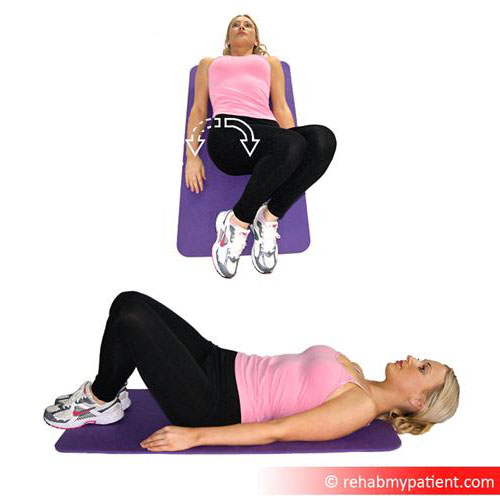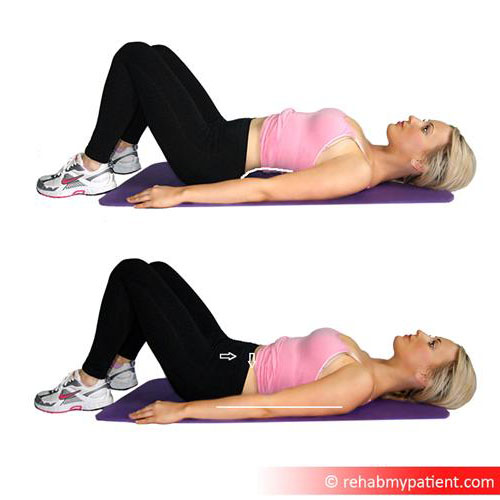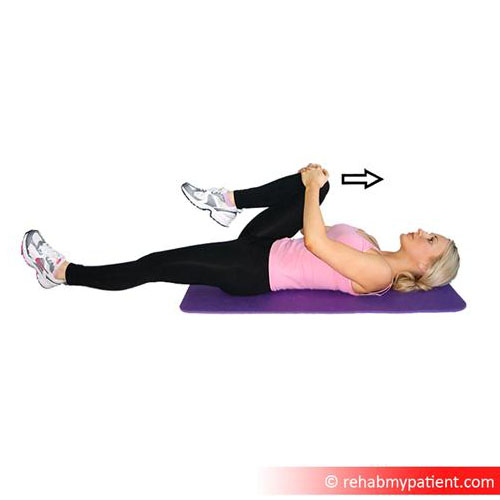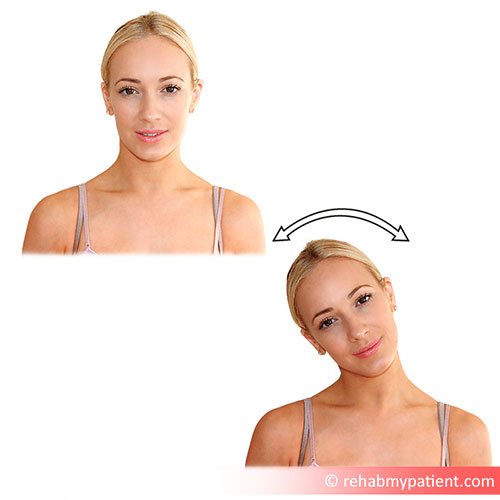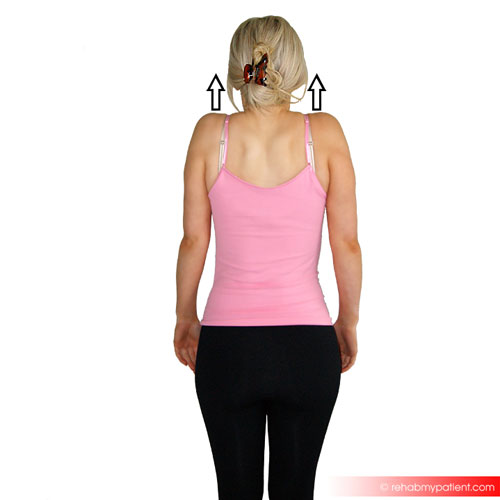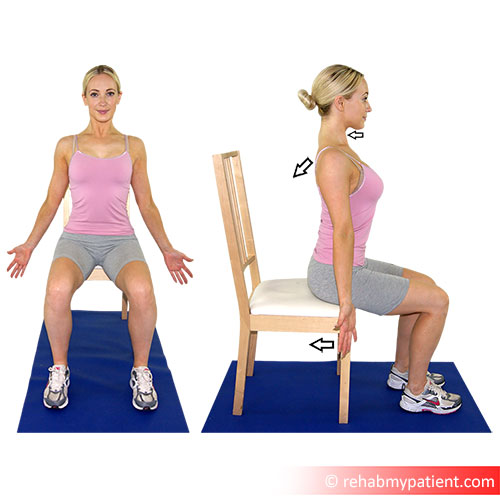Knee pain can be caused by a number of issues such as arthritis, ligaments, cartilage or the tendons across your knee cap. Listed below are a number of simple exercises which can done in the comfort of your own home.
Exercises provided courtesy of rehabmypatient.com our exercise programme partner.
It is normal for these exercises to feel uncomfortable or mildly painful but do not push into severe pain.

Knee flexion supine
Slide your heel towards your bottom. Go as far as feels comfortable, and then return to the start position (with the leg straight). This is a good way to improve mobility to a stiff knee joint.
Perform 30s times daily | Repeat 2-3 times | Hold for 2-3
Video: http://youtu.be/skOauZ54MLU

Inner range VMO quadriceps lying
First, identify your VMO – it’s the inside part of the front of your thigh, and makes up part of the quadriceps muscles. Lie flat on your back, and place a rolled up towel under your knee. Contract and isolate your VMO by squeezing your inside thigh muscle. You should be pressing your knee against the towel. As your leg straightens, it does not fully lift off the floor. Slowly return to the start position.
Perform 10-15s times daily | Repeat 3-10 times | Hold for 2-3
Video: http://youtu.be/tlwLDomsTII
VMO strengthening standing
First, identify your VMO – it’s the inside part of the front of your thigh, and makes up part of the quadriceps muscles. Stand with good posture, with one leg in front of your other leg and knees slightly bent. On your front leg, press your heel into the floor and pull your toes towards you. Keeping some pressure through the heel, slide your heel away from you and straighten your leg. Try to use the VMO to control the contraction rather than any other part of your body (e.g. your glutes, or Hamstrings).
Perform 10-15s times daily | Repeat 3-10 times | Hold for 2-3
Video: http://youtu.be/oiAPjaW7Ae0

VMO strengthening sitting
First, identify your VMO – it’s the inside part of the front of your thigh, and makes up part of the quadriceps muscles. Sit down with good posture, and press your heel into the floor. Keeping some pressure through the heel, slide your heel away from you and straighten your leg. Try to use the VMO to control the contraction rather than any other part of your body (e.g. your glutes, or Hamstrings).
Perform 10-15s times daily | Repeat 3-10 times | Hold for 2-3
Video: http://youtu.be/ImjunlmW5gY

VMO strengthening squat
Rest your back against a wall, and place a medicine ball, goof ball or other round ball between your knees, and squeeze your knees together. Go into a squat position, but only go as far as you feel comfortable. Then come back up to the start position. Make sure the hips, knees and feet are all in-line.
Perform 10-15s times daily | Repeat 3-10 times | Hold for 2-3
Video: http://youtu.be/K2yNBYhbnPw

1/4 squat
Open your legs slightly wider than shoulder width, and bend your knees to the 1/4 squat position. Make sure you keep the middle of your knee-cap in line with the middle toes of your foot.
Perform 10-15s times daily | Repeat 3-5 times | Hold for 2-3
Video: http://youtu.be/NpKJwz27-JU

Take a step forwards (as if you were going into a lunge), and drop the back knee towards the ground. The front knee stays at 90 degrees, but does not go forwards of that point. Always keep good alignment… your knee should stay over the 2nd ray of your foot, and never let your knee drop inwards. Return to the start position.
Perform 10-15s times daily | Repeat 3-5 times | Hold for 2-3
Video: http://youtu.be/MwFFJWRQDQM
If your shoulder pain is not improving and you would like an assessment or if you just want advice on specific exercises then please get in touch on 01236 425661, email at admin@jmcphysiocures.co.uk or contact us on social media.




